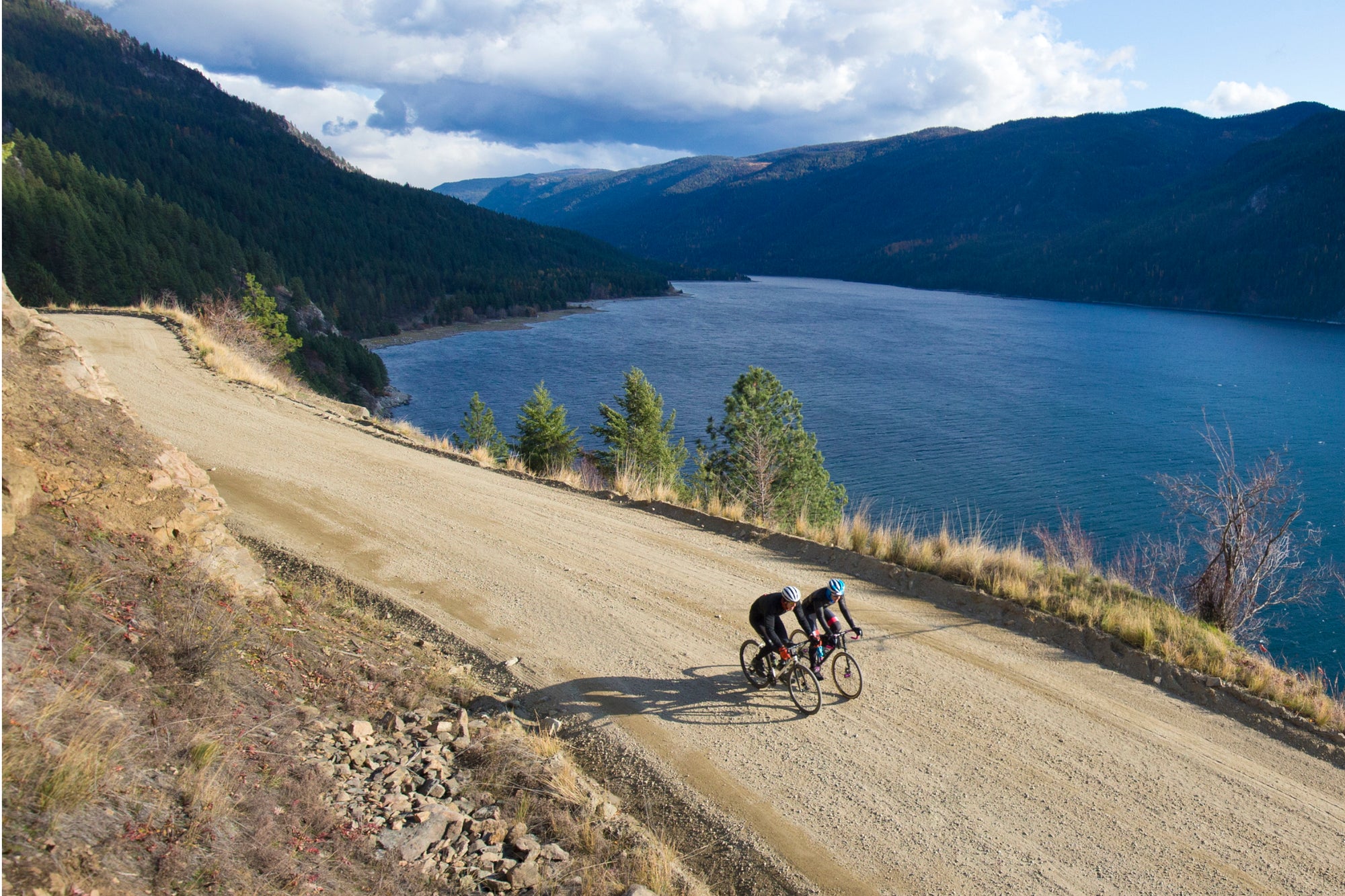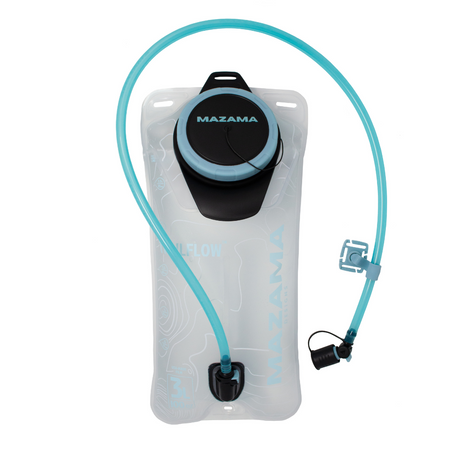What Is Gravel Biking and Why Is It So Popular?
September 13 2022 – Matt Hoskins

If you spend any time outdoors, you’ve probably noticed the growing popularity of gravel biking over the last several years. Maybe you haven’t seen it, but you’ve heard friends and strangers talking about it.
You’re not imagining it — gravel bikes have exploded in popularity recently. From February 2020 to February 2022, gravel bike sales increased by 62%. And that was after a decade of steady growth already
Despite what you may think, gravel biking isn’t new. It’s been around for a while — in fact, early mountain biking is similar to what we now call gravel biking. The modern name — “gravel biking” — isn’t totally encompassing of what it entails, but we’ll get into that later.
Why is gravel biking so popular all of a sudden? And should you sell your road or mountain bike for a new gravel bike? The latter question is yours to answer. But we’ll dive into the former throughout this blog.
If you, like many others, are curious about the growing sport of gravel biking, you’re in the right place.

Photo by Coen van de Broek on Unsplash
What Is Gravel Biking?
Let’s start with the basics: Gravel biking is multi-terrain riding and encompasses anything too rough for a road bike that doesn’t require the robustness and maneuverability of a mountain bike.
Many cyclists would argue that “gravel” is a bit of a misnomer — and may even discredit the true breadth of the sport.
Gravel riding takes place on more than just gravel. Gravel routes can include dirt roads, paved back roads, muddy trails, singletrack, and really anywhere in between.
You can think of a gravel bike as a cross between a road bike and a mountain bike. A gravel bike has similar gearing and geometry to a road bike. Gravel bikes don’t have much suspension but do have wide tires like a mountain bike. They also have stronger frames, long wheelbases, and drop bars.
In general, gravel biking is accessible and intuitive. Obviously, there are some techniques that can help, but you don’t need to know much to get started.
Benefits of Gravel Biking
While the possibilities when gravel biking are seemingly endless, so are the benefits. Here are some of the biggest benefits of gravel biking:
-
You can avoid busy roads and distracted drivers.
-
Gravel biking is easy to enjoy with friends — riding side-by-side is no problem on deserted back roads.
-
You can explore new and exciting terrain on peaceful and scenic dirt roads or trails.
-
Along with the physical benefits, you can enjoy the mental and emotional benefits of spending time in nature.

Photo by Dirtyfreehub
- As we mentioned before, gravel biking is extremely versatile. You can take it from the road to the trail and everywhere in between.
-
Gravel biking has fewer barriers to entry than mountain biking. It’s much more accessible for beginners, and less technical.
-
You usually don’t have to go far to find a place to ride. Gravel routes are easier to find than singletrack — and more weatherproof.
-
Gravel riding has a casual, friendly, and inclusive atmosphere. It’s less about competition and more about enjoying yourself.
-
You can have a good time on (basically) any bike. Unlike with road cycling, the bike you ride on gravel isn’t as important.
As you can see, gravel biking has a lot going for it. If you’re thinking of getting started with gravel riding, you have a lot to look forward to. As you can see, gravel biking has a lot going for it. According to many adherents, one of gravel’s great benefits that that road and mountain biking can’t match, is the opportunity to socialize while you ride. As Linda English, co-founder of the route finding site, Dirtyfreehub explains, “The ability to ride side-by-side and converse without worrying about traffic adds a whole new dimension to cycling.”
What Gear Do You Need for Gravel Biking?
First things first: You don’t really need any special bike or accessories for gravel biking. That’s part of what makes gravel riding so accessible and popular. But — like with other outdoor sports — there is specialty gear that makes this type of riding a little easier. It’s up to you to decide what you want to upgrade, if anything.
As with any type of riding, there’s standard gear you should bring to take care of yourself and your bike. Gravel biking is no different. Of course, depending on where and for how long you’re riding, you’ll need to adjust what you bring.
Here are the essentials:
-
Flat repair kit: What you need will depend on the tires you have. Regardless of what kind of tires you’re riding, bring a tire lever, CO2 cartridges or a pump, and extra tubes. If you have tubeless tires, bring sealant and a tire plugger. A great choice to minimize flats and increase ride comfort is to use Cushcore Gravel XC inserts.

Photo by Nick Zaback
-
Multitool: You never know when you’ll have some sort of mechanical issue you need to fix, so be prepared with a multitool.
-
First aid kit: The size of your first aid kit should correspond with the length and intensity of your ride — but at the very least, carry the basics.
-
Food: Nutrition is important for any outdoor excursion. Bring snacks that pack well, are easy to eat, and give you energy.
-
Hydration: Bike-mounted bottles and hydration packs — or both — are good choices for gravel riding. A pack can hold more water and offer more storage, while a bottle is the simple, minimalist choice.
-
Lights: Bring a headlight and taillight. A headlamp is never a bad idea, either.
-
Clothes and extra layers: Road or mountain biking apparel work fine — it’s all about comfort and utility. Make sure to bring extra layers for when the temperature drops (waterproof is a good idea depending on where you’re riding).
-
Navigation: GPS is great to help navigate, but don’t underestimate the value of a paper map. Detailed maps and GPS are extra helpful since back road systems can be extensive and unmarked.
-
Cargo (optional): Bike-mounted cargo is great for gravel biking. You can choose from a variety of handlebar and top tube bags, plus gravel riding panniers for bikepacking.
How to Get Started Gravel Biking
Ready to start gravel riding? As you now know, there’s not much keeping you from getting out there. Setting out and exploring back roads and pathways on your current bike is a great way to gauge your interest, enjoyment, and equipment needs. But if you’re looking for more guidance, here are a few quick tips for getting started gravel biking:
-
Start with a shorter route. If you’re not used to gravel biking, it might take more out of you than you expect.
-
Find a route by asking at local bike shop or using online resources like GravelMap or Dirty Freehub. As Linda at dirtyfreehub.org explains, “Getting navigation right, can make a huge difference in your experience. She recommends a 4 point approach: 1) Shop the route, 2) Download the route, 3) Follow the route, and 4) Always have a plan for the unexpected.”
-
Do a little conditioning (if you want). Again, not necessary, but a little strength training can make the transition to gravel riding even easier.
-
Join local group rides where you’ll learn about new routes and meet other gravel riders.

Once you find what interests you most — whether it’s exploring, bikepacking, racing, or just having fun with friends — you can start to tailor your equipment set to best meet your needs.
Have you given gravel riding a try? Let us know what you think in the comments below!

